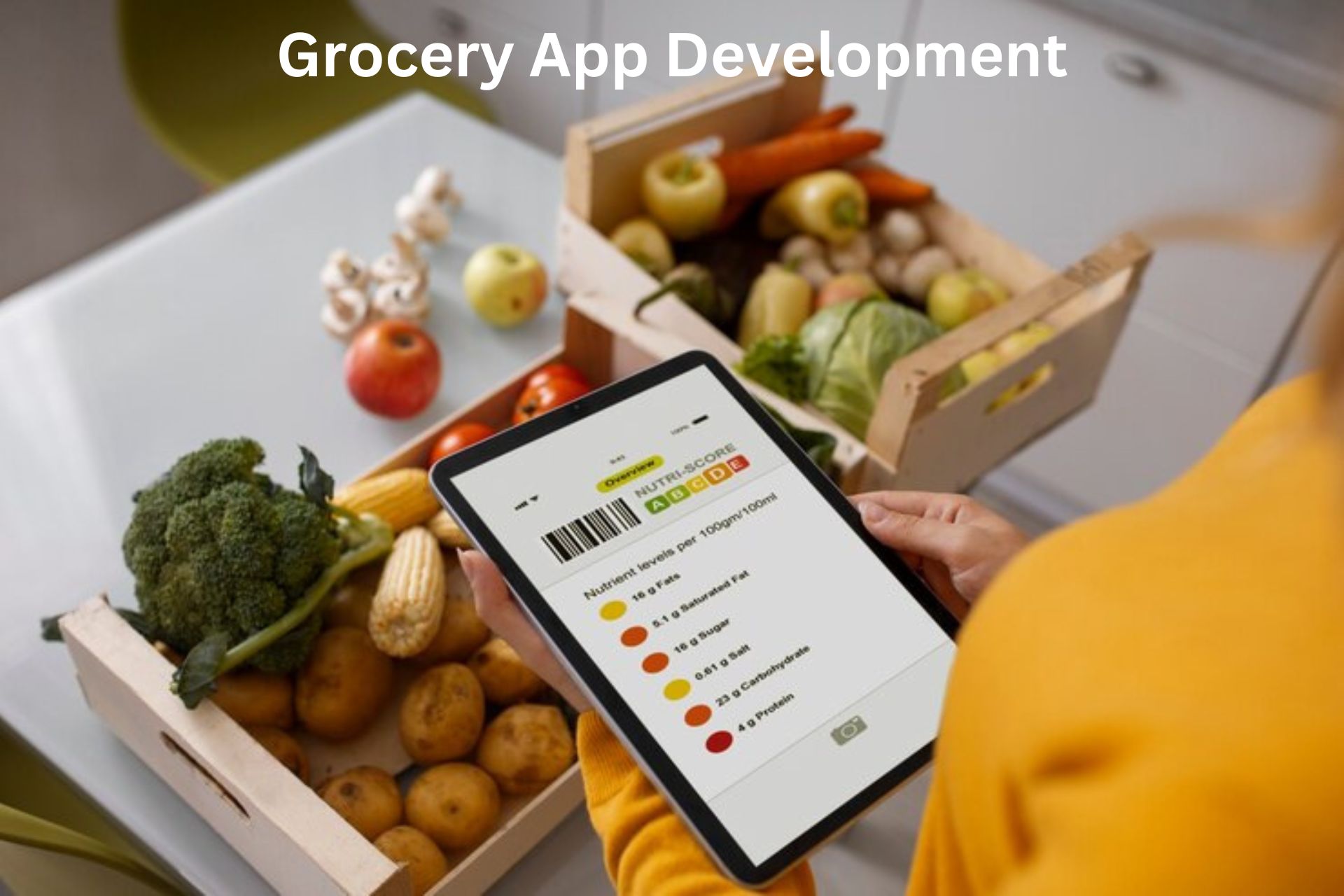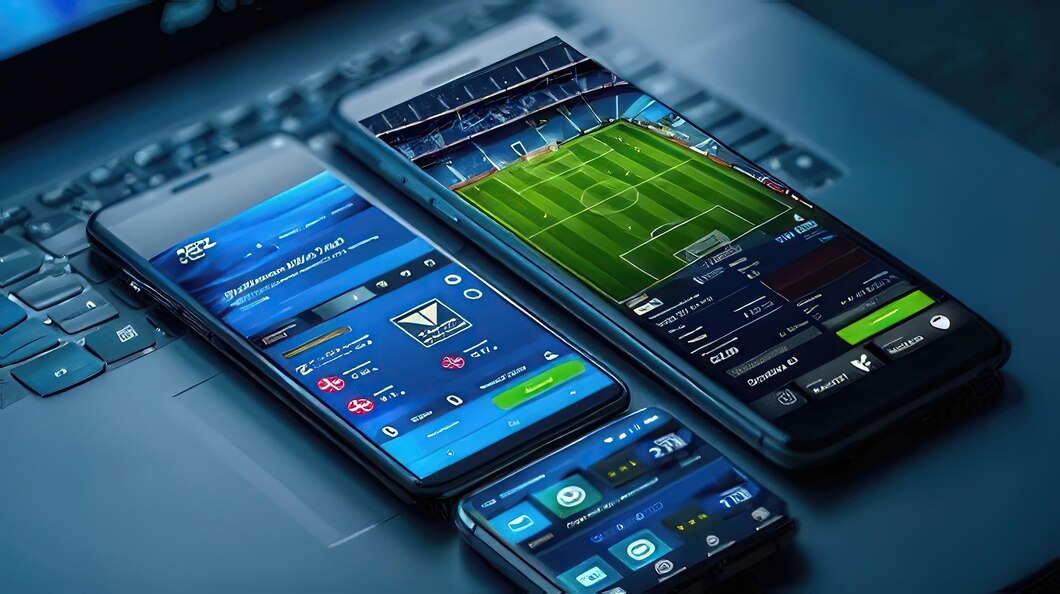Grocery delivery apps have revolutionized the way people shop for their daily necessities, providing convenience and time-saving benefits. As the on-demand economy grows, these apps have become essential, catering to the needs of busy individuals and families. The recent pandemic further accelerated their adoption, making them a staple in urban and suburban areas worldwide.
The Rise of On-Demand Grocery Delivery
The concept of grocery delivery isn’t entirely new; however, technological advancements have redefined the scope and efficiency of this service. The rise of smartphones and the proliferation of high-speed internet have made on-demand services like grocery delivery easily accessible. A report from Grand View Research indicates that the global online grocery market size was valued at USD 285.70 billion in 2020 and is expected to grow at a compound annual growth rate (CAGR) of 24.8% from 2021 to 2028.
Market Overview and Growth Statistics
Grocery delivery services are gaining traction across different demographics, with millennials and Gen Z being the primary users. Factors contributing to this growth include the increasing availability of products, competitive pricing, and the comfort of having groceries delivered to one’s doorstep.
Importance of Grocery Delivery Apps in Modern Society
In today’s fast-paced world, time is of the essence. Grocery delivery apps not only save time but also provide a safe and contactless shopping experience, which has become crucial post-COVID-19. They offer personalized shopping experiences, making grocery shopping more efficient and tailored to individual preferences.
Key Features of Grocery Delivery Apps
Developing a successful grocery delivery app requires integrating key features that enhance the user experience and streamline the shopping process.
- User Registration and Authentication
A smooth onboarding process is crucial. Apps should offer multiple sign-up options, including social media integration, email, or phone number registration, coupled with secure authentication methods like OTP or biometric logins.
- Product Search and Categorization
Efficient search functionality is the backbone of any grocery app. Features like voice search, advanced filters, and categorization by dietary preferences, brands, or popularity can significantly enhance user experience.
- Seamless Shopping Cart and Checkout Process
The checkout process should be intuitive and fast. Features such as cart reminders, saved payment methods, and a clear summary of orders encourage users to complete their purchases. Offering guest checkout options can also reduce friction for new users.
- Real-Time Order Tracking
Providing real-time tracking of orders ensures transparency and builds trust. Customers should be able to view the status of their orders, track the delivery in real-time, and get estimated delivery times.
- Multiple Payment Options
Diverse payment methods, including credit/debit cards, digital wallets, net banking, and COD (Cash on Delivery), provide flexibility and cater to a broader audience.
- Push Notifications and Alerts
Push notifications are vital for keeping users engaged and informed. Alerts about discounts, order updates, and personalized offers can enhance user retention and encourage frequent app usage.
- Customer Reviews and Ratings
Allowing users to review products and rate their delivery experience helps build a community of trust and provides valuable feedback for continuous improvement.
- Discounts, Coupons, and Loyalty Programs
Offering discounts, coupons, and loyalty rewards can significantly boost customer retention and attract new users. A well-designed loyalty program encourages repeated purchases and fosters customer loyalty.
- Customer Support and Help Desk
An in-app help desk or live chat feature provides instant support to users, addressing their queries and issues promptly, thereby enhancing customer satisfaction.
Advanced Features for Enhanced User Experience
To stand out in a competitive market, integrating advanced features can elevate the overall user experience.
AI-Powered Recommendations and Personalization
AI-driven algorithms can analyze user behavior and preferences to offer personalized product recommendations, enhancing the shopping experience and increasing sales.
Voice Search and Voice Commands Integration
Integrating voice search capabilities allows users to find products or place orders using voice commands, making the app more accessible, especially to those with disabilities or busy individuals.
- In-App Chat and Communication
Direct communication with delivery personnel or customer service through in-app chat can resolve issues quickly, providing a seamless and satisfactory shopping experience.
- Contactless Delivery Options
Post-pandemic, contactless delivery options have become a standard. Features like leaving the delivery at the door and digital signatures for delivery confirmation can enhance user safety and satisfaction.
Trends in Grocery Delivery App Development
Staying abreast of the latest trends can help developers create apps that are not only functional but also future-proof.
Integration of Augmented Reality (AR) for Virtual Shopping
AR can offer a virtual shopping experience where users can visualize products in their kitchen or pantry, adding an innovative touch to the shopping process.
Sustainability and Eco-Friendly Delivery Options
There’s a growing trend towards sustainability. Eco-friendly packaging, electric delivery vehicles, and promoting local organic products can appeal to environmentally conscious consumers.
The Role of AI and Machine Learning in Inventory Management
AI and machine learning can optimize inventory management, predict demand, reduce waste, and ensure that the most popular products are always in stock.
Use of Blockchain for Secure Transactions
Blockchain technology can be used to enhance security and transparency in transactions, building trust with users by ensuring data integrity and preventing fraud.
Expansion of Hyperlocal Delivery Models
Hyperlocal delivery, focusing on sourcing from local stores and ensuring swift deliveries, is gaining traction. This model supports local businesses and provides quicker delivery times.
Challenges in Grocery Delivery App Development
Despite the opportunities, there are several challenges that developers must address to build a successful grocery delivery app.
Managing Logistics and Supply Chain
Efficient logistics are critical for timely deliveries. This involves managing a complex network of suppliers, delivery personnel, and warehouses to ensure smooth operations.
Ensuring Data Privacy and Security
With the increase in online transactions, data security is a significant concern. Apps must comply with data protection regulations and incorporate robust security measures to safeguard user information.
Handling High Demand and Peak Times
Managing high traffic during peak times, such as holidays or emergencies, requires scalable infrastructure and efficient order management systems to prevent crashes and delays.
Cost Estimation for Developing a Grocery Delivery App
Developing a grocery delivery app involves several costs that vary based on features, complexity, and the development approach.
Factors Influencing Development Costs
Key factors include the number of features, app complexity, development team location, and the choice of technology stack. Customizations and integrations with third-party services also add to the costs.
Cost Breakdown by Features
A detailed cost breakdown can help in planning the budget. Basic features like user registration and product search may cost less, while advanced features like AI recommendations and AR can significantly increase expenses.
In-House vs. Outsourcing Development
Choosing between in-house development and outsourcing can impact costs and the development timeline. Outsourcing to regions with lower costs can be budget-friendly but requires thorough vetting to ensure quality.
Technology Stack for Grocery Delivery Apps
Choosing the right technology stack is crucial for building a robust and scalable app.
- Front-End and Back-End Technologies
For front-end, technologies like React Native or Flutter are popular due to their cross-platform capabilities. Back-end development may use Node.js, Django, or Ruby on Rails, depending on the app’s requirements.
- APIs and Third-Party Integrations
APIs for payment gateways, map services, and push notifications are essential for a fully functional app. Popular choices include Stripe for payments and Google Maps for location tracking.
- Choosing the Right Database and Cloud Solutions
Databases like MongoDB or Firebase offer scalability, while cloud services from AWS, Google Cloud, or Azure provide reliable hosting and data management solutions.
Best Practices for Grocery Delivery App Development
Adhering to best practices can streamline development and enhance the app’s performance.
Focus on UI/UX Design
A user-friendly design with intuitive navigation is crucial for retaining users. Clean layouts, easy access to features, and a seamless checkout process contribute to a positive user experience.
Ensuring App Scalability and Performance
Scalability should be a priority, allowing the app to handle growing numbers of users and transactions. Performance optimization, including fast loading times and smooth interactions, is essential.
Continuous Testing and Quality Assurance
Regular testing and updates are vital to maintain app quality and security. Implementing automated testing can help in catching bugs early and ensuring a flawless user experience.
Marketing Strategies for Grocery Delivery Apps
To ensure the success of a grocery delivery app, a robust marketing strategy is necessary.
- Leveraging Social Media and Influencer Marketing
Social media platforms are effective for reaching a broad audience. Partnering with influencers and running targeted ads can increase visibility and attract new users.
- SEO and ASO (App Store Optimization) Techniques
Optimizing the app for search engines and app stores can drive organic traffic. Techniques include using relevant keywords, encouraging positive reviews, and ensuring an appealing app description.
- Customer Retention Strategies
Loyalty programs, personalized offers, and regular engagement through newsletters or app notifications can keep users coming back. Building a strong community around the app can foster long-term loyalty.
Future of Grocery Delivery Apps
The future of grocery delivery apps looks promising with continued advancements in technology and evolving consumer preferences.
- Emerging Technologies and Their Impact
Technologies like AI, blockchain, and AR will continue to shape the grocery delivery landscape, making the shopping experience more seamless, secure, and engaging.
- Predicted Trends in User Behavior
Users are likely to prefer apps that offer personalized experiences, sustainability options, and fast delivery. Apps that adapt to these preferences will lead the market.
- Potential for Market Expansion
With increasing smartphone penetration and internet accessibility, there’s vast potential for market expansion, especially in emerging economies where online grocery shopping is still in its nascent stages.
Conclusion
Grocery delivery apps are an essential component of the modern shopping ecosystem, offering convenience, safety, and personalized experiences. From basic features like user authentication to advanced integrations like AI and AR, these apps are continuously evolving to meet consumer demands.
For businesses looking to enter the grocery delivery market, understanding the key features, staying updated with the latest trends, and overcoming development challenges are crucial. With the right approach, a grocery delivery app can not only thrive but also set new standards in the on-demand service industry.
FAQs
What is the average cost of developing a grocery delivery app?
The cost can range from $30,000 to $150,000 or more, depending on the complexity, features, and development approach chosen.
How long does it take to develop a grocery delivery app?
Typically, it takes around 4-6 months for a basic app and 9-12 months for a feature-rich, complex app, considering thorough testing and iteration phases.
What are the essential features of a grocery delivery app?
Key features include user authentication, product search, a shopping cart, real-time order tracking, multiple payment options, and customer support.
How can I make my grocery delivery app stand out?
Incorporating advanced features like AI recommendations, AR virtual shopping, and offering sustainable delivery options can set your app apart.
What technologies are used in grocery delivery apps?
Technologies like React Native or Flutter for front-end, Node.js or Django for back-end, and APIs for payment, maps, and notifications are commonly used.
How do grocery delivery apps ensure data security?
They use encryption, secure payment gateways, and compliance with data protection regulations to safeguard user information.



